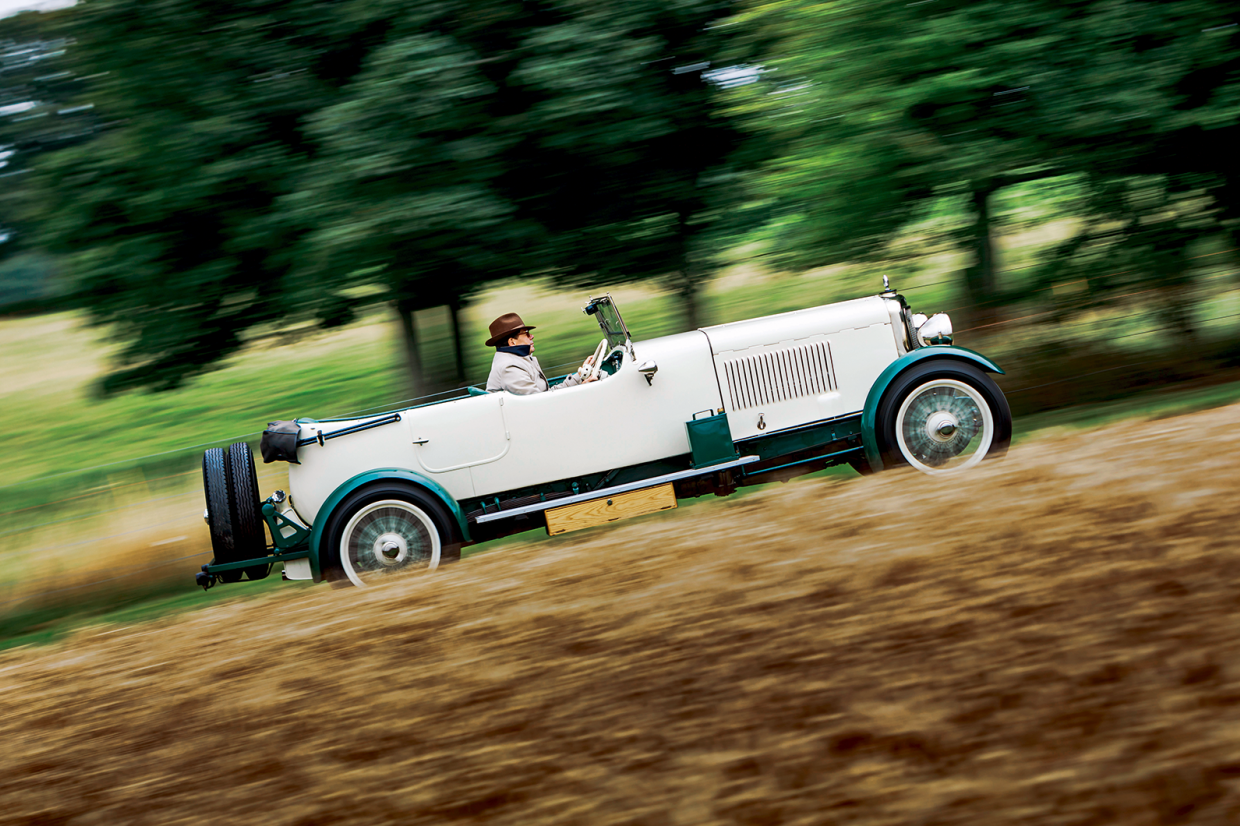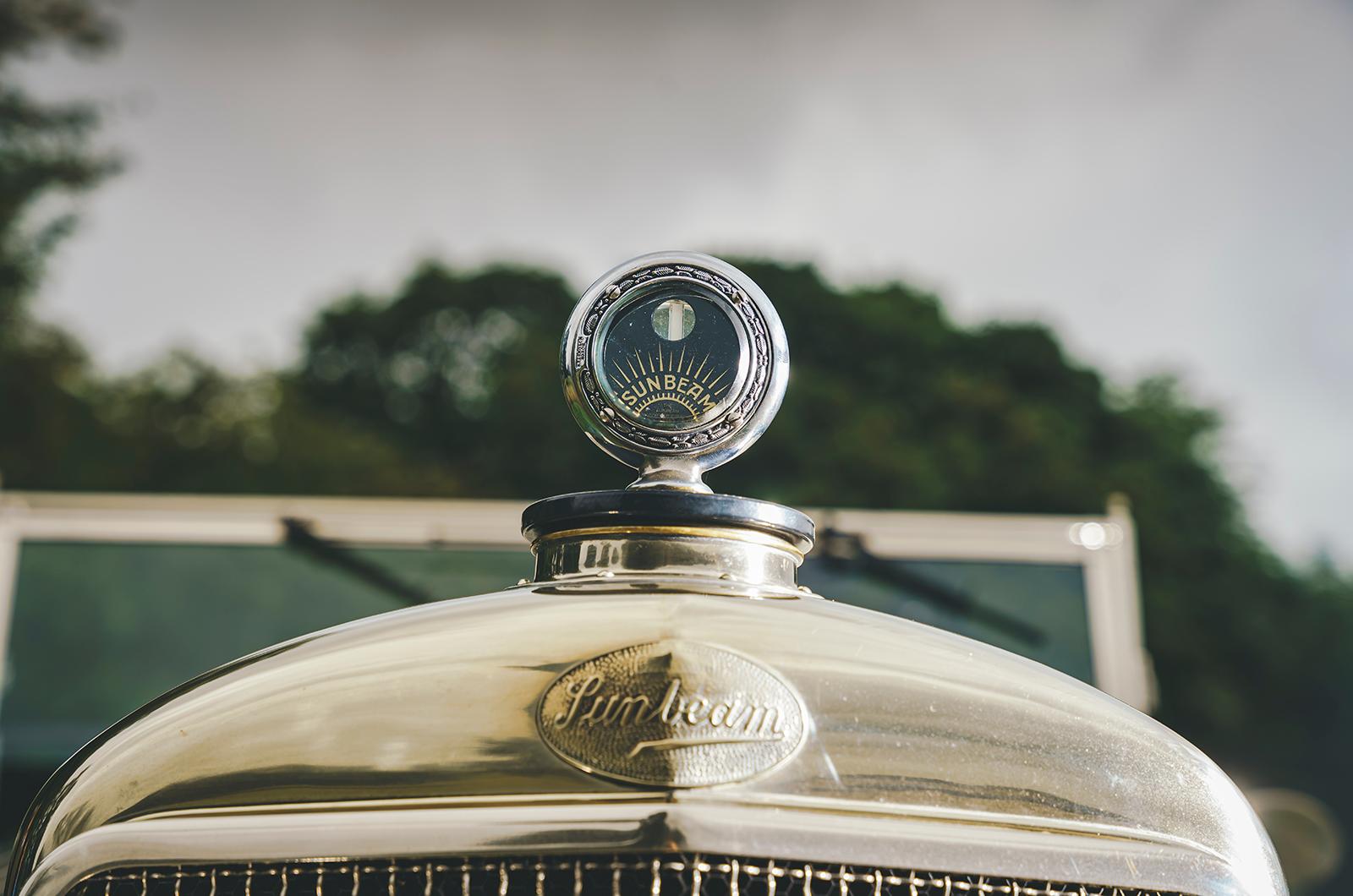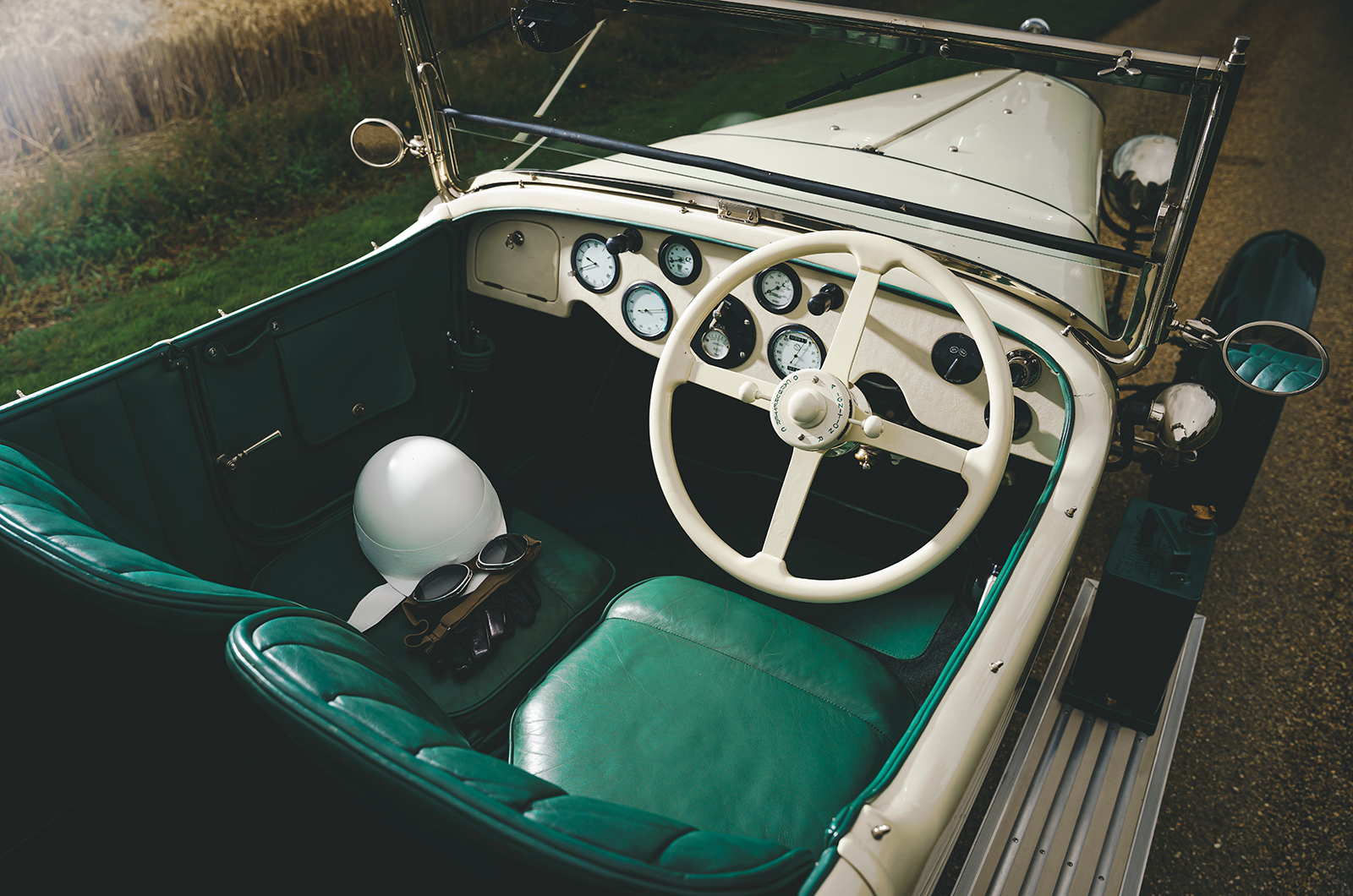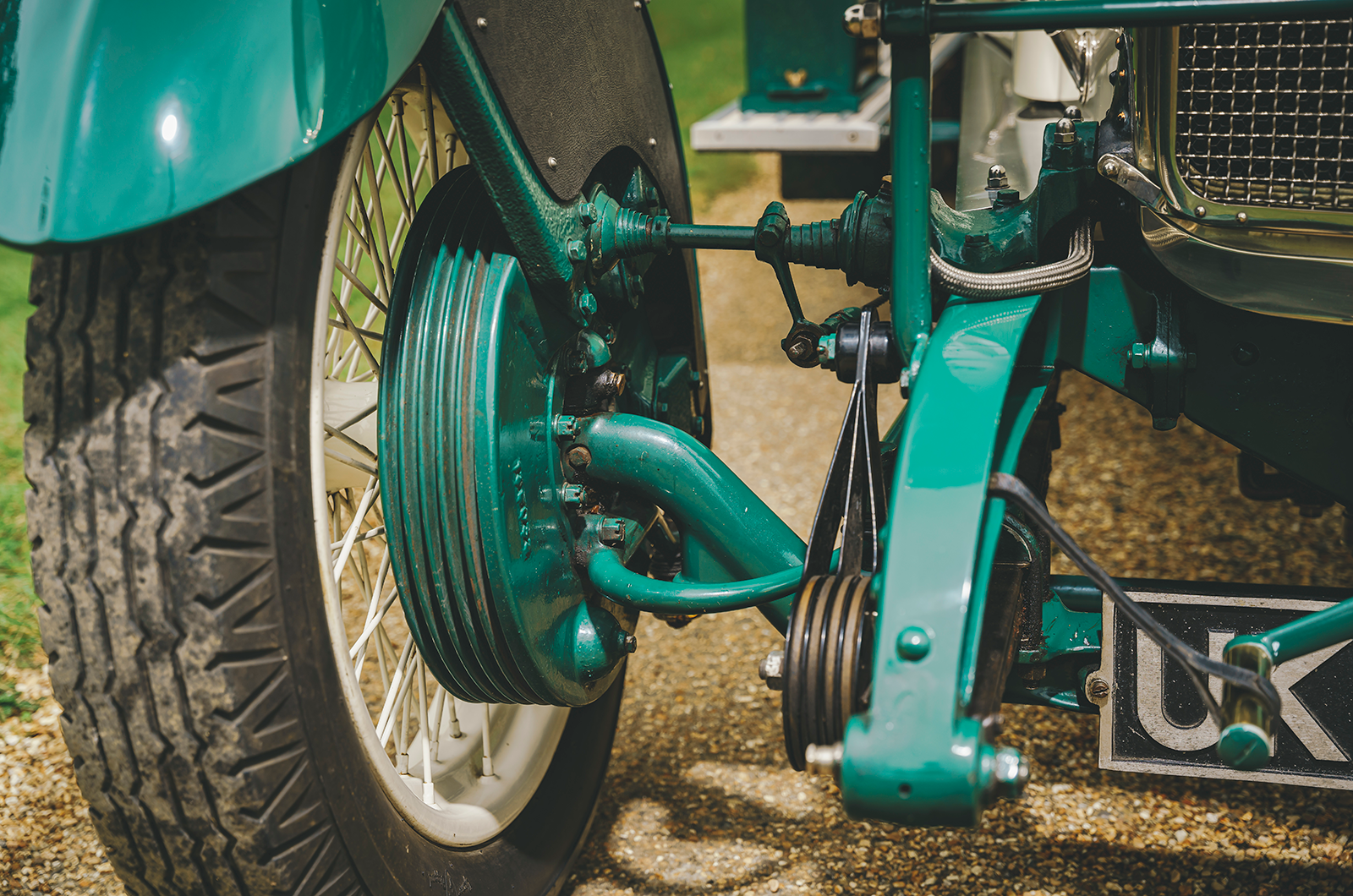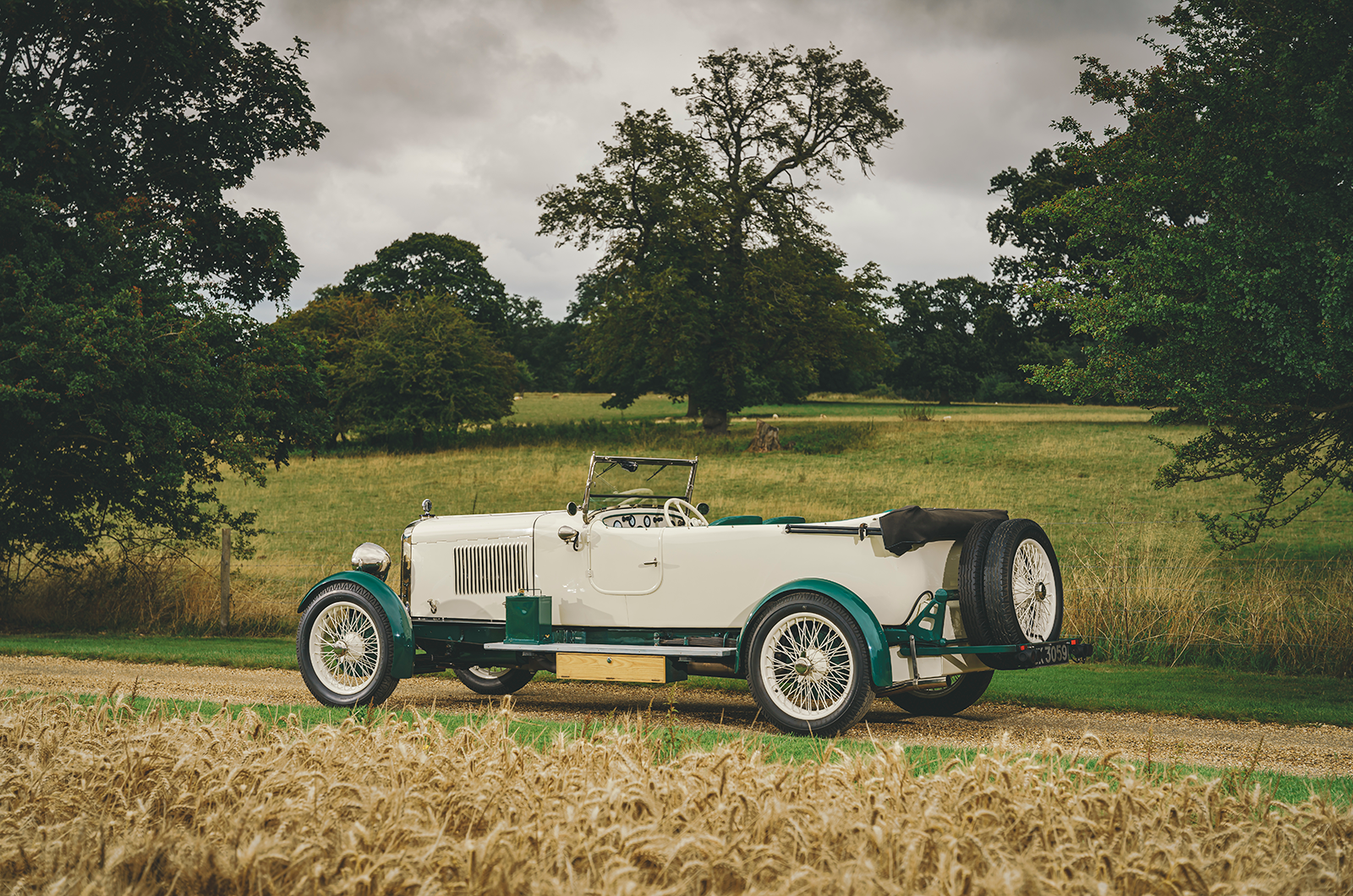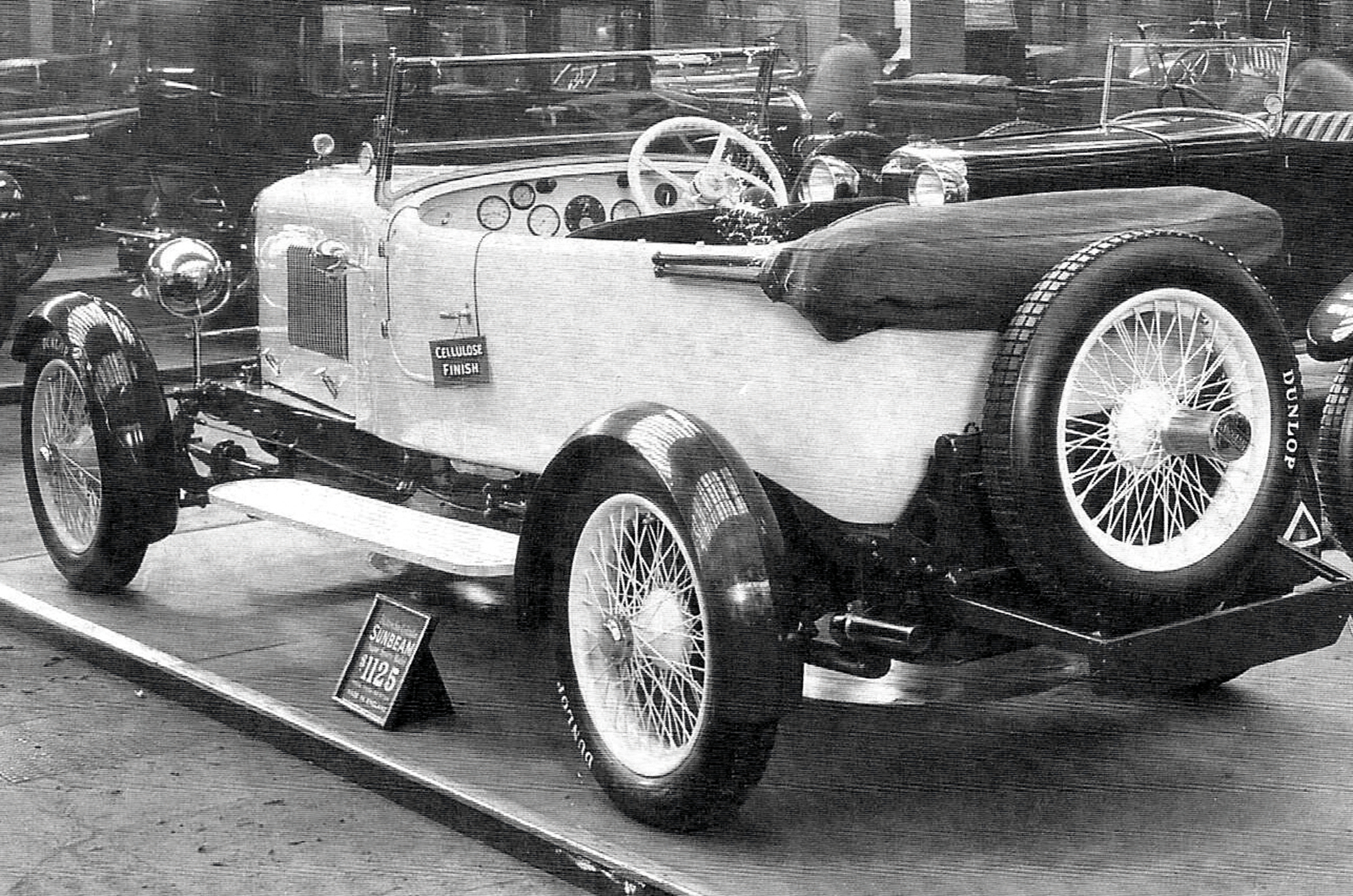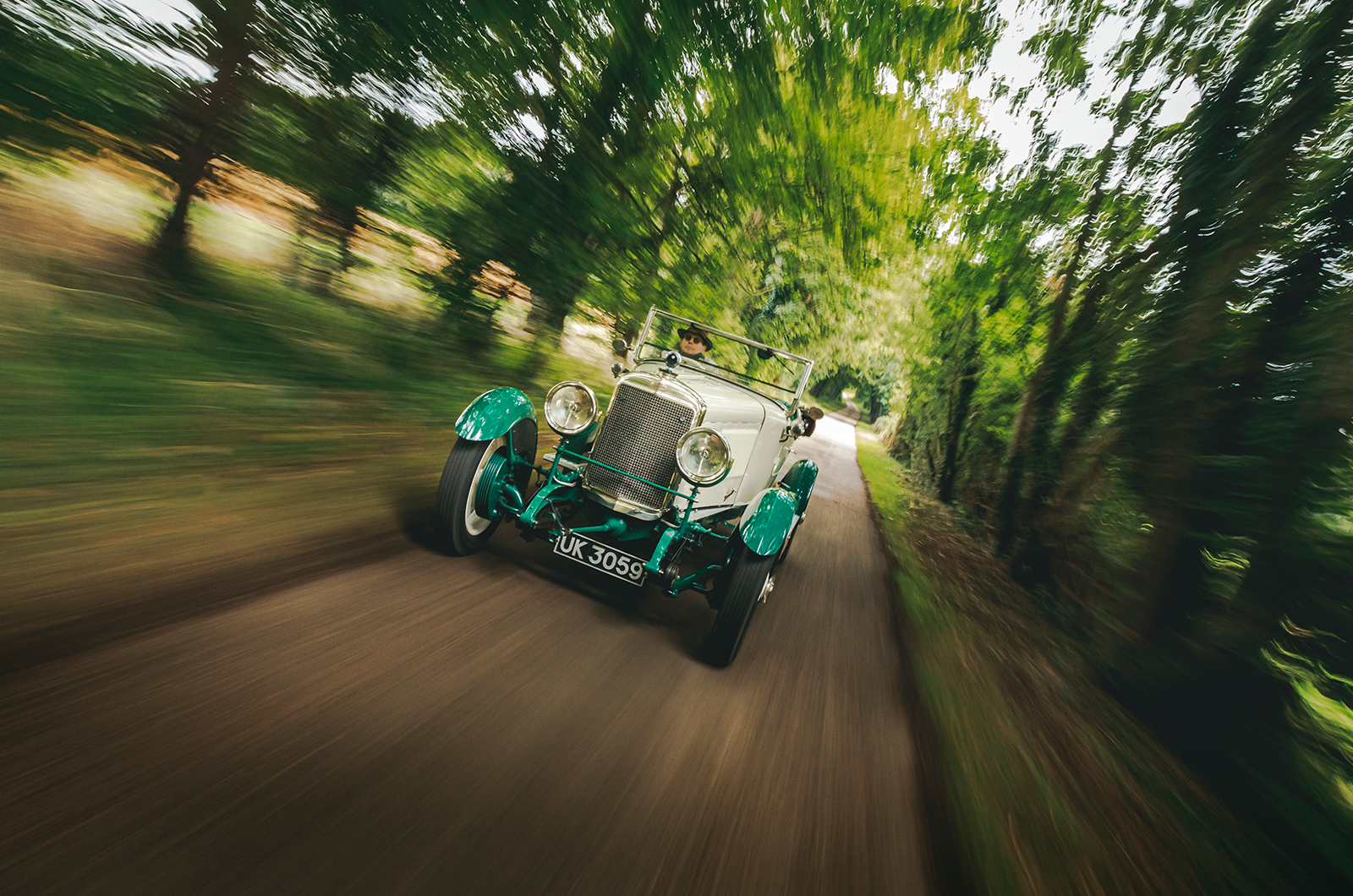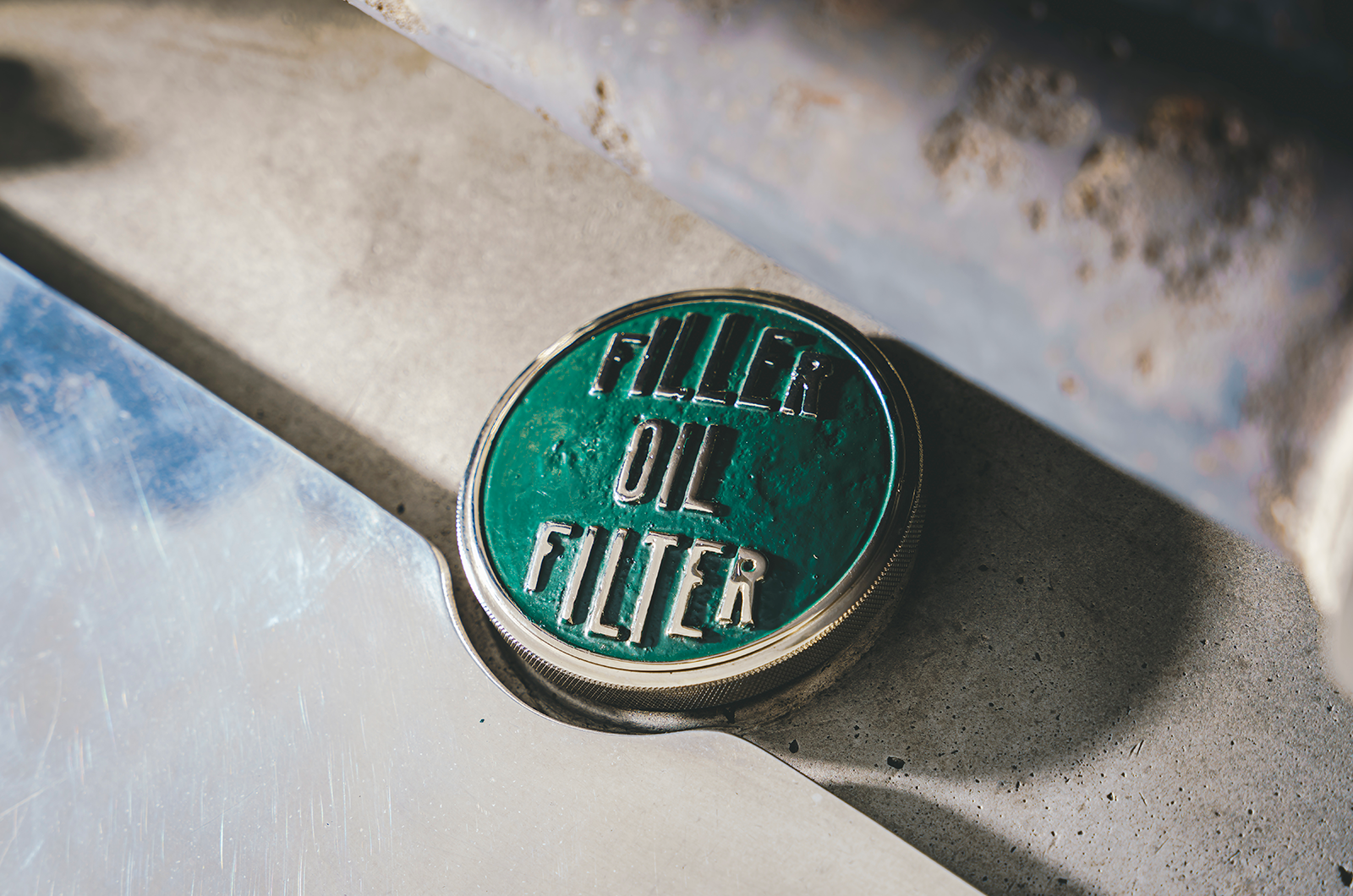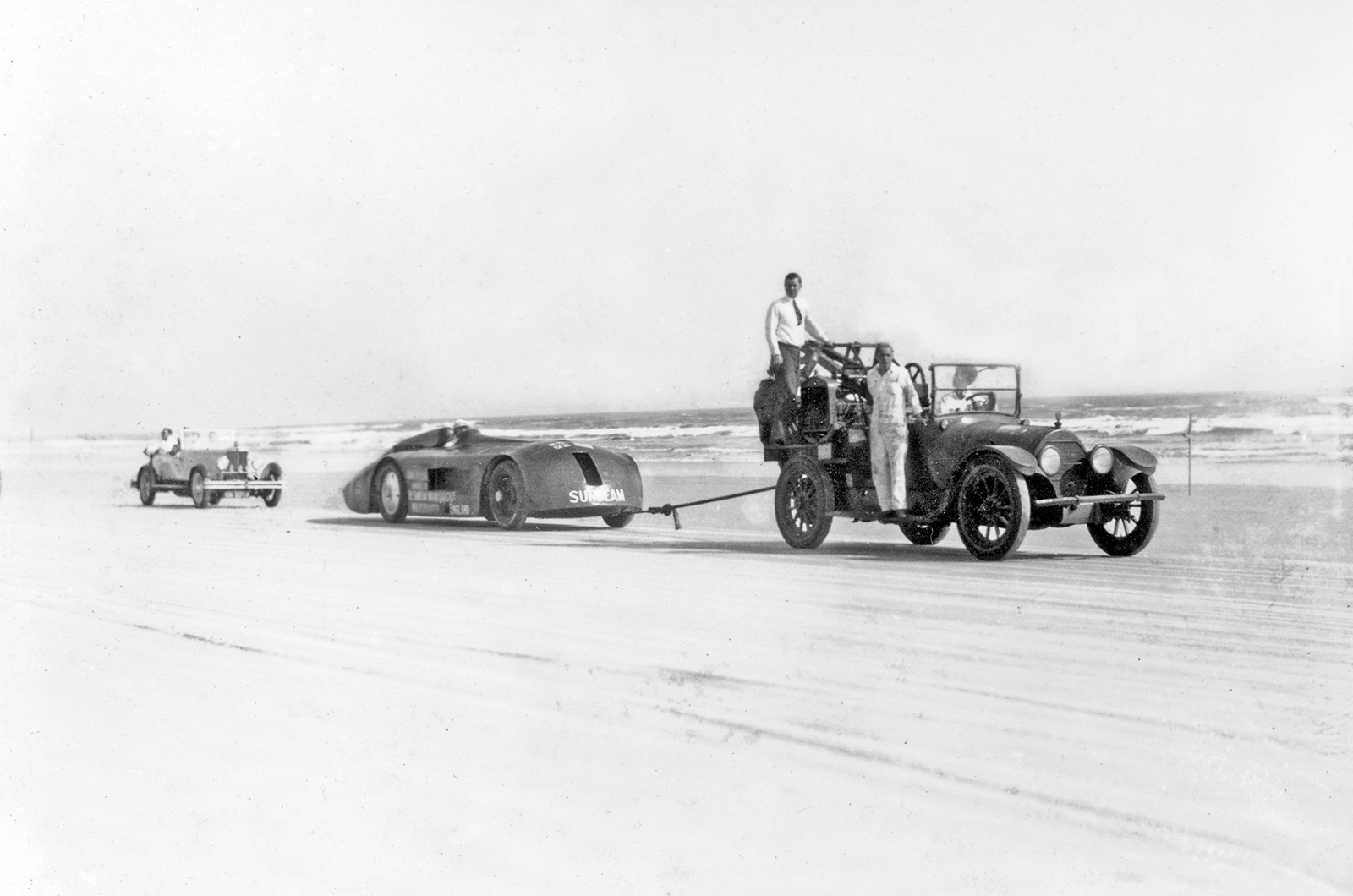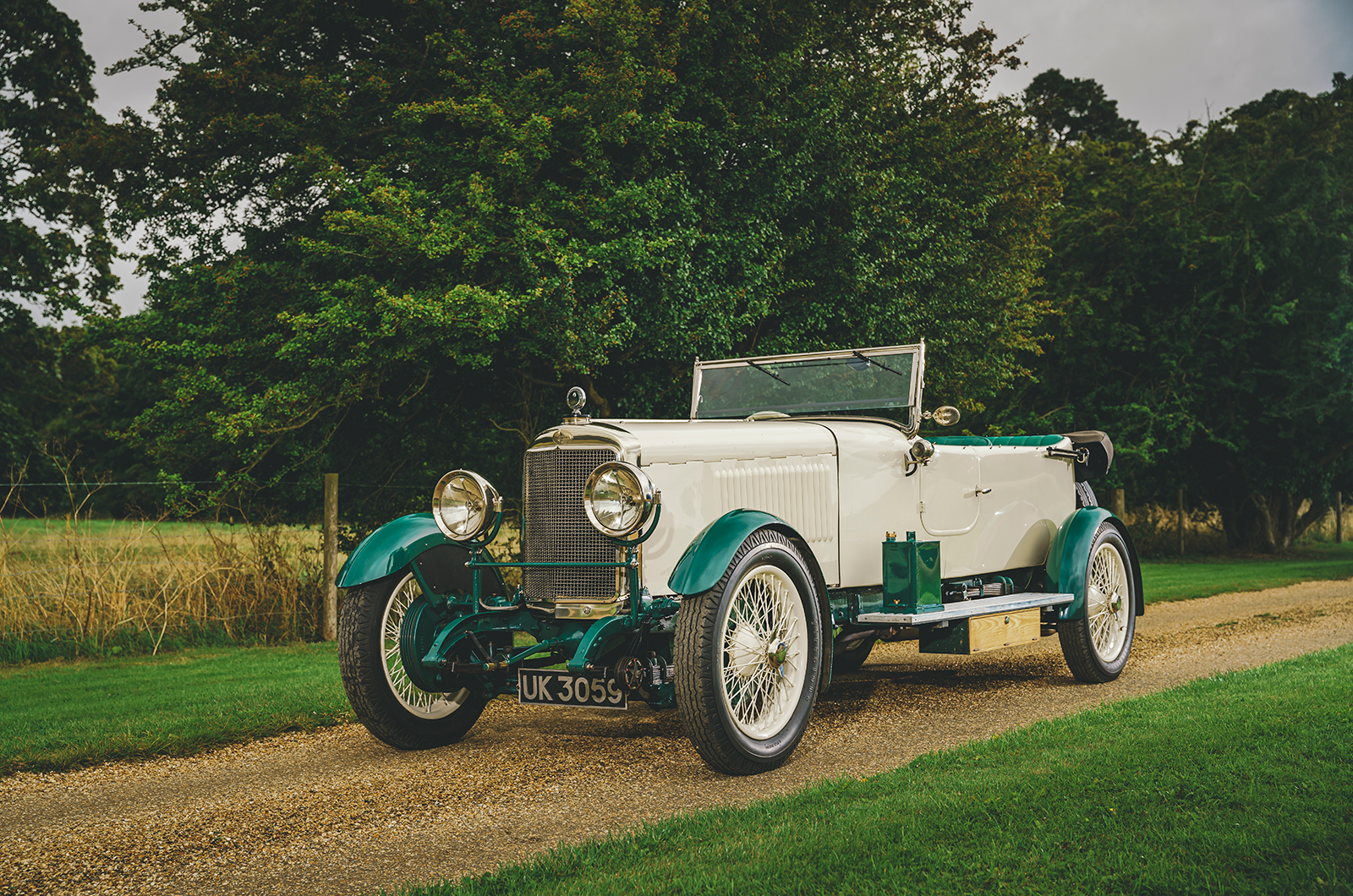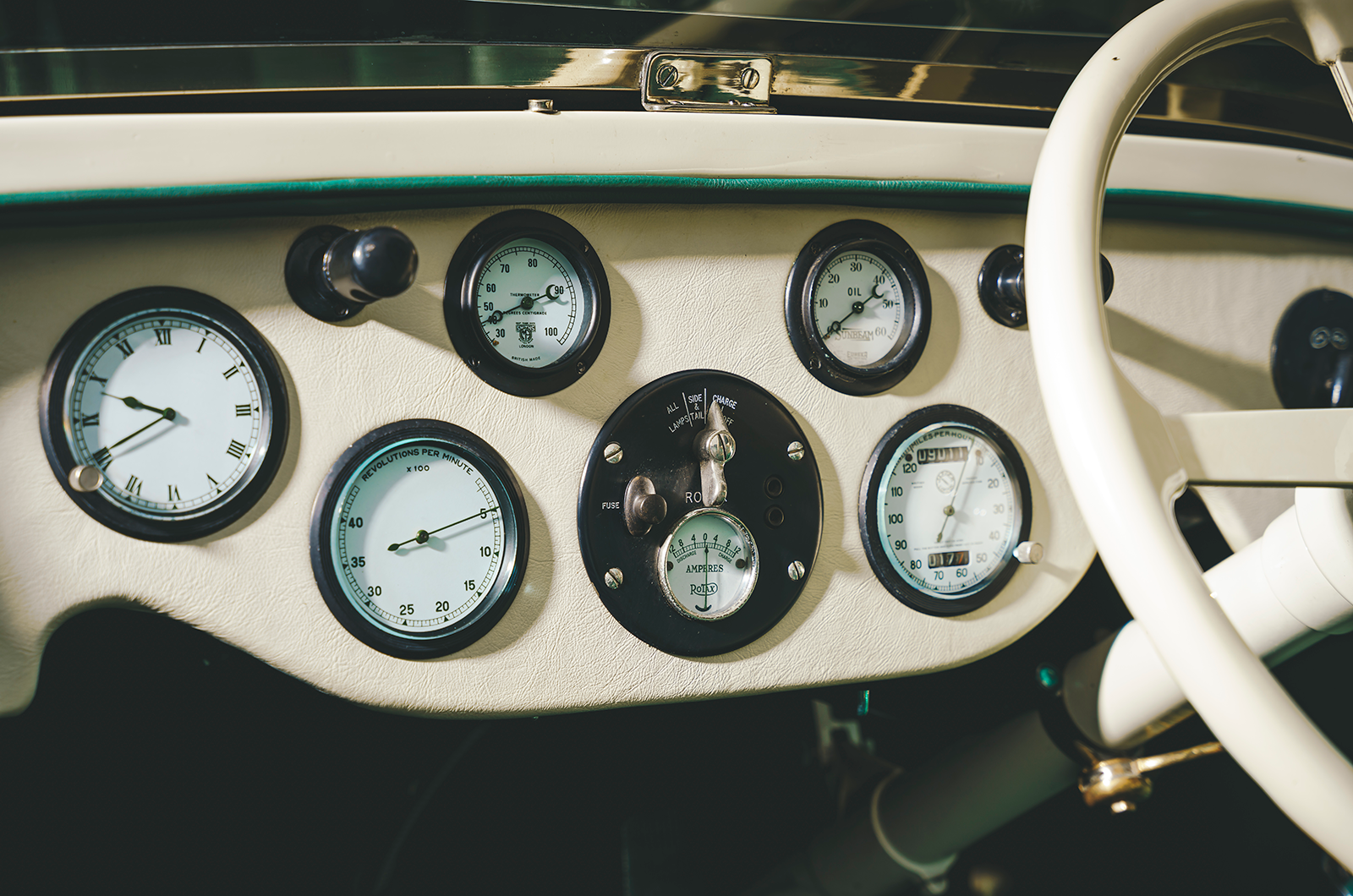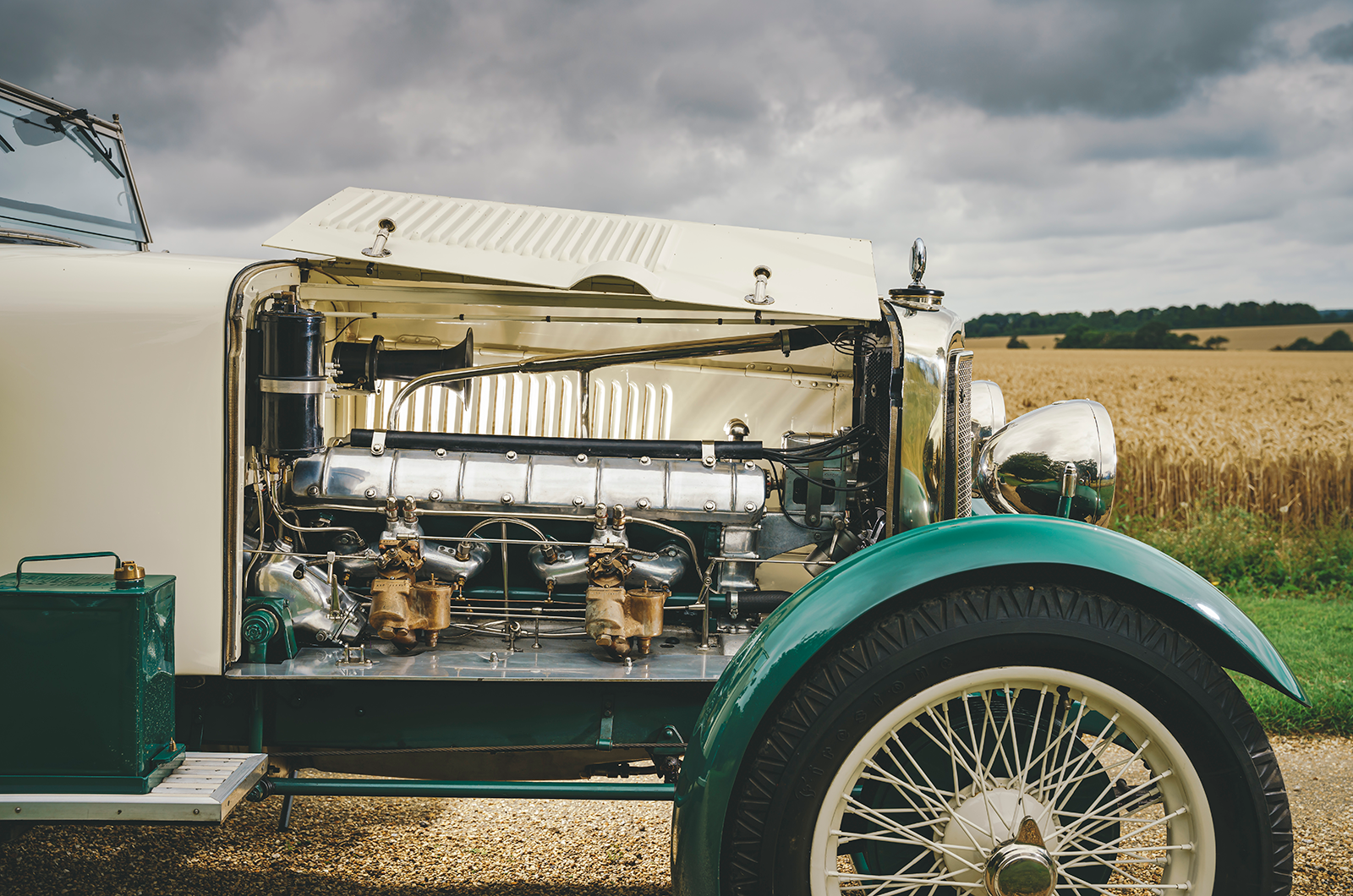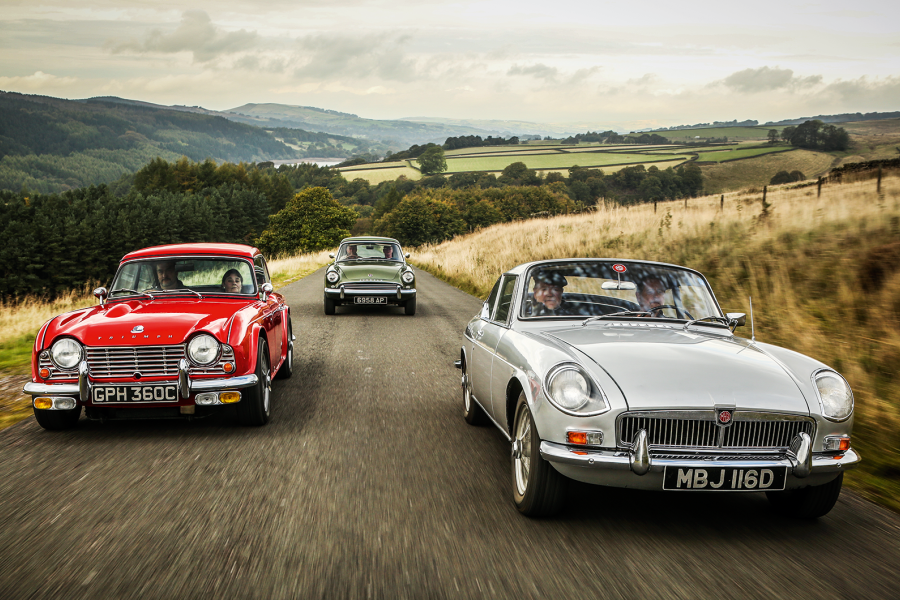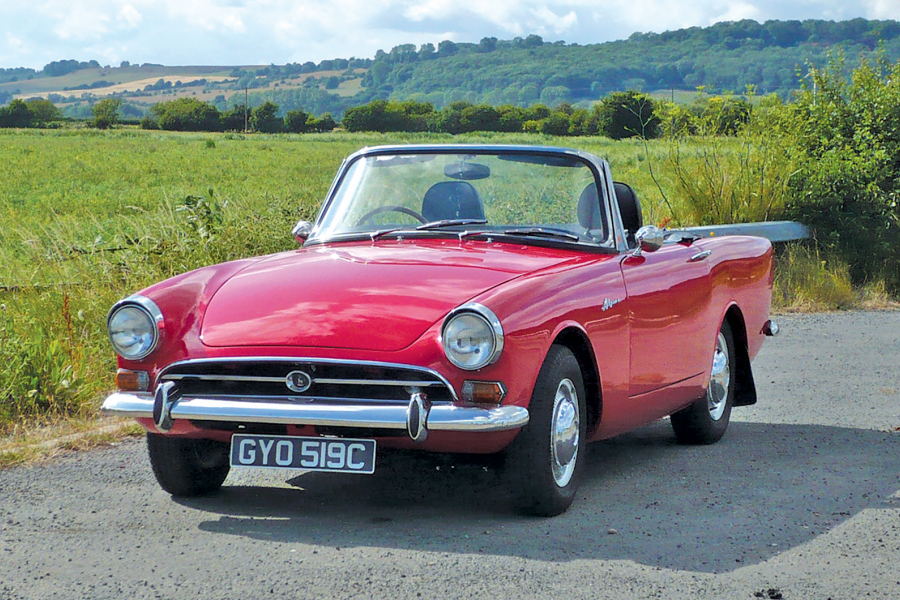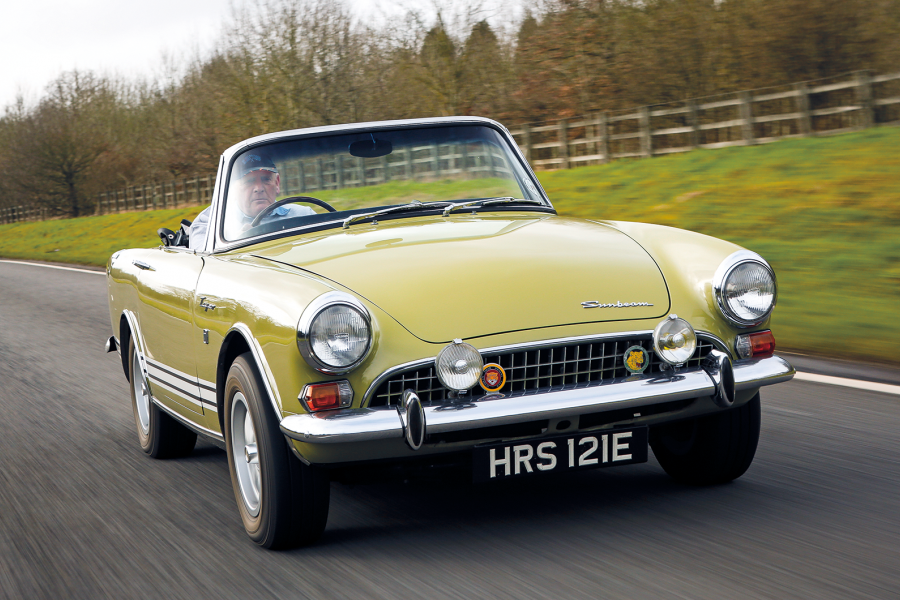The Twin Cam was shipped in early March with the crated-up record car to New York, with Segrave and team on the stylish Cunard liner RMS Berengaria.
From there a boat carried cars and crew to Jacksonville, Florida, where Segrave received a staggering reception.
Sunbeam’s director Coatalen was fully committed to the publicity of record-breaking, no doubt wanting his English superstar to be seen in a Sunbeam sports car around Florida, and he got his money’s worth.
In bright sunshine, the tourer led the convoy from the docks with a police escort cutting a clear route for the English ace.
The Twin Cam picked up some speed of its own on Daytona Beach, reaching 75mph
Pathé film reports show Segrave driving the Twin Cam down the beach course with local dignitaries, the camera focusing on the white Jaeger speedometer as he reached 75mph on the sand.
Among the dark American sedans at the Art Deco-style Clarendon Hotel, the Sunbeam really stood out as fans tried to get a glimpse of the famous Englishman.
The combat between Malcolm Campbell and Segrave was major international news, and The Mystery lived up to expectations with an average of 203.793mph on the Atlantic beach.
With an astonishing speed advantage of nearly 30mph over Bluebird’s previous record, set at Pendine Sands, the brutish red machine posted several firsts for Segrave and Sunbeam, and began a period of British dominance.
Sitting high behind the white dashboard and looking down that long bonnet, it”s easy to conjure this car’s Stateside history, with Segrave surrounded by expectant spectators packing the beach as he motored into the paddock.
The new Sunbeam sports car was much admired in America, including by speedboat specialist Commodore Garfield ‘Gar’ Wood who’d come down to Florida to witness Segrave’s record attempt.
The American Water Speed Record holder was the first man to travel at more than 100mph offshore and was well known to Segrave, who himself had plans to switch to water attempts.
The silver-haired Wood was a hugely prosperous engineering entrepreneur.
After leaving Segrave, the Twin Cam moved on to Garfield ‘Gar’ Wood
His boat designs were rated the most advanced, and after Segrave’s successful record run he did a deal at dinner one evening to swap the Twin Cam for two speedboat hulls.
The Sunbeam was a true exotic in America, and Wood kept it for 12 years, taking it back to his home in Algonac, Michigan, on the Great Lakes Waterway where both Gar Wood and Chris-Craft boats were built.
The idea of the English sports car being owned by a second record-breaker, and being based at the birthplace of powerboating, is fascinating.
Wood eventually sold the Sunbeam in October 1938 to Major Greening, a Canadian enthusiast who regarded it as an early Christmas present.
When the car was shipped to Greening’s home in Hamilton, Ontario, the custom papers declared the value at only $100.
During the fierce Canadian winter the twin-cam engine suffered damage, and Greening passed the broken Sunbeam on to his mechanic.
Over the ensuing 40 years the famous car was ignobly fitted with a 60hp Ford flathead V8, but with few modifications to the chassis.
After several owners and a lengthy period in storage, the Segrave 3-litre was saved by Briton Cameron Millar, the respected Sunbeam Twin Cam and Maserati aficionado.
The Sunbeam’s instruments survived intact through the years
Fifty-two years after it was first shipped to Daytona, chassis 4001G headed back to England to Millar‘s impressive home at Dower House, near Potters Bar.
Although the original engine had long gone (it does survive, fitted to another Twin Cam), the car retained many original features including the unique ivory instruments and the special René Thomas sprung steering wheel that Segrave had fitted before it went over to Daytona.
A multiple Sunbeam Twin Cam owner, Millar had too many projects and little progress on 4001G was made.
Finally, after several keepers, this wonderful car found the ideal saviours in Chris and Pearl Rigg, who enlisted Jim Catnach, the foremost Twin Cam Sunbeam specialist, to return it to the style and condition in which it was presented in Kensington in 1926.
The engine has been subject to extensive work in recent years
The meticulous rebuild that took place in Catnach’s JC Engineering workshop in Cambridgeshire included a new engine, using an original crankcase.
After six years’ work, the finished article looked magnificent and attracted enthusiastic compliments wherever the Riggs drove it.
With progress being made at Beaulieu to rebuild one of the record-breaking Sunbeam’s Matabele 12-cylinder engines to make the 203mph monster mobile again, wouldn’t it be great to see the 1000hp reunited again with Segrave’s Twin Cam?
Just picture the two cars being shipped for display at the Amelia Island concours, with a diversion to Daytona Beach for a demo run.
With five years until the centenary of his incredible 200mph achievement, there’s plenty of time to make it happen.
Images: Max Edleston
Thanks to John Polson; Chris Rigg; the owners of Branches Park
READ MORE
On the up: Vauxhall 14hp M-type vs Sunbeam Fourteen
Driving the original James Bond car, a Sunbeam Alpine
How the other half lived: Bentley MkVI vs Armstrong Siddeley Sapphire 346
Mick Walsh
Mick Walsh is Classic & Sports Car’s International Editor
